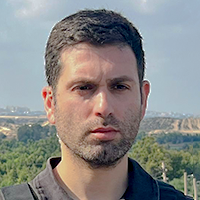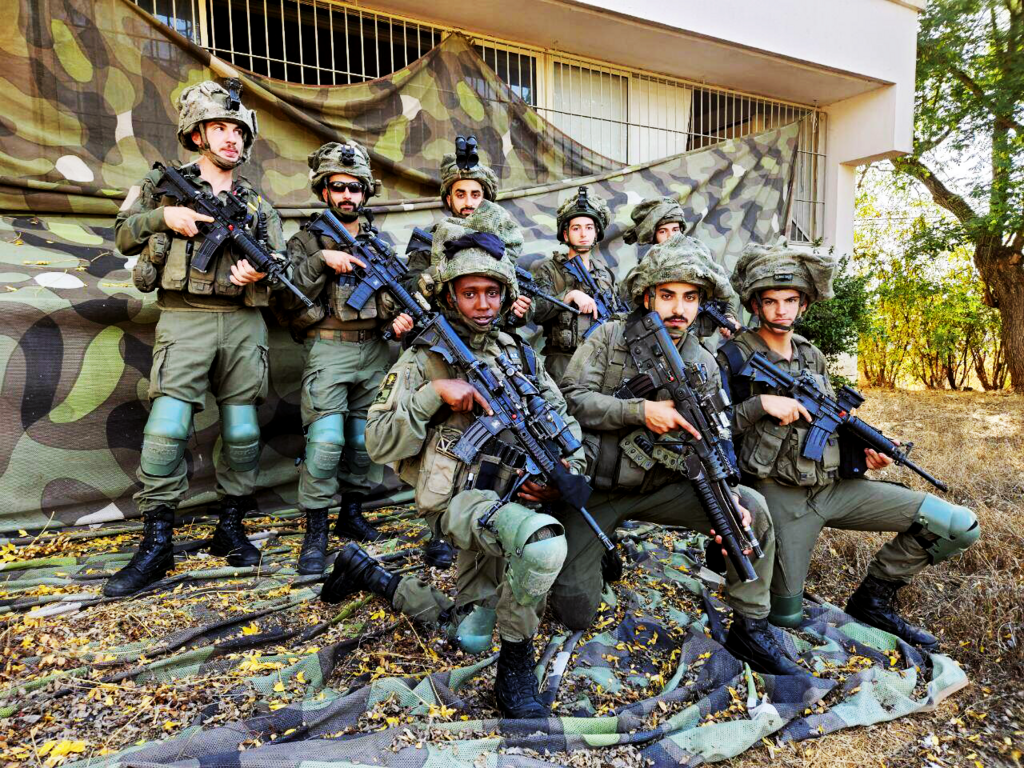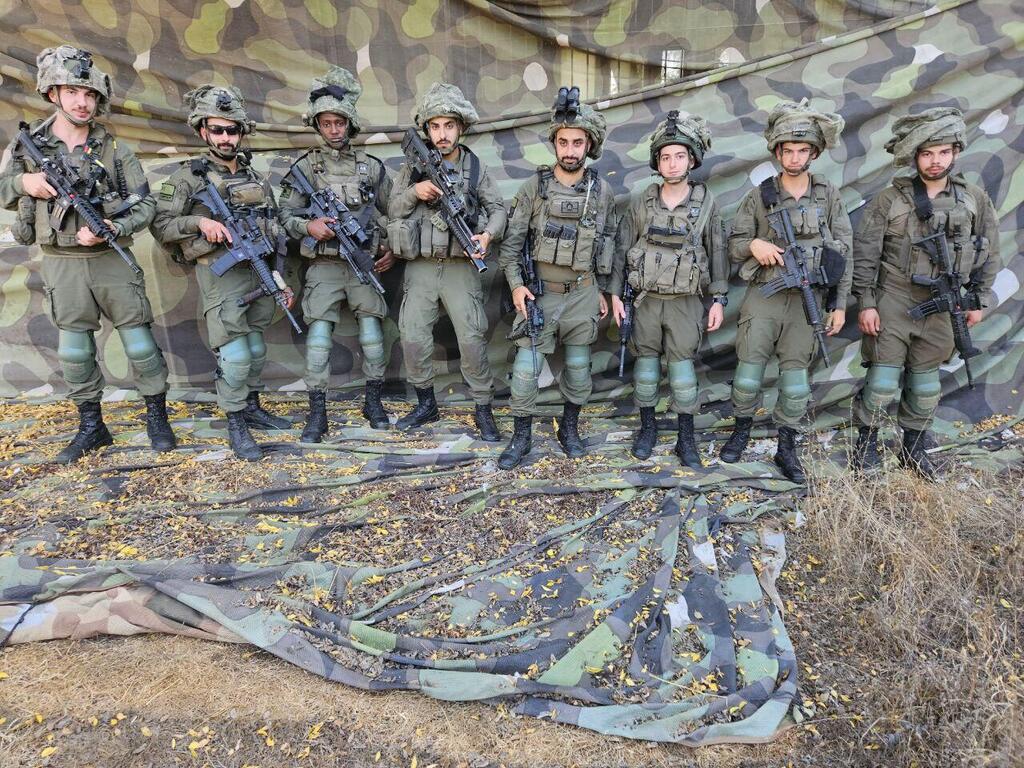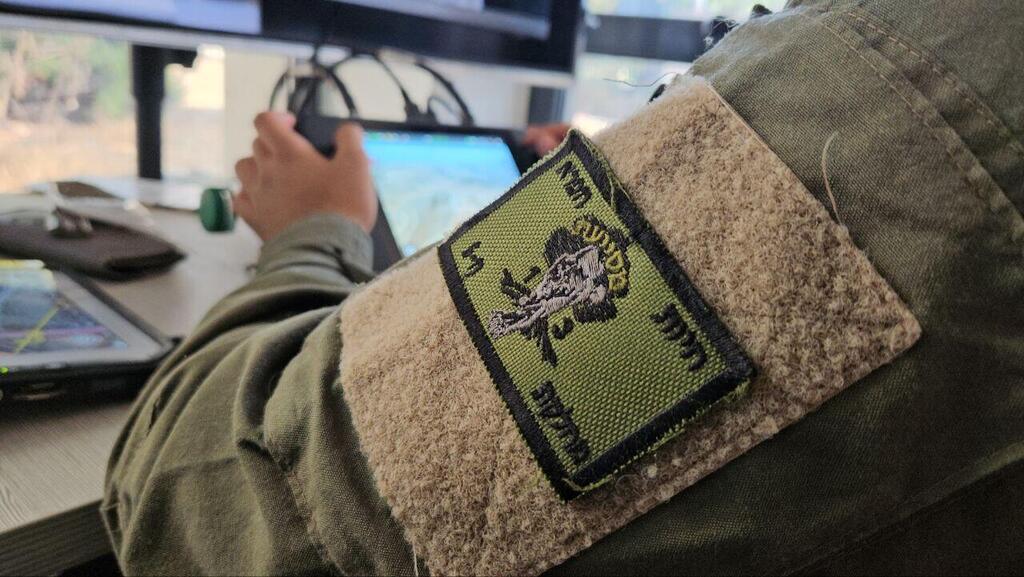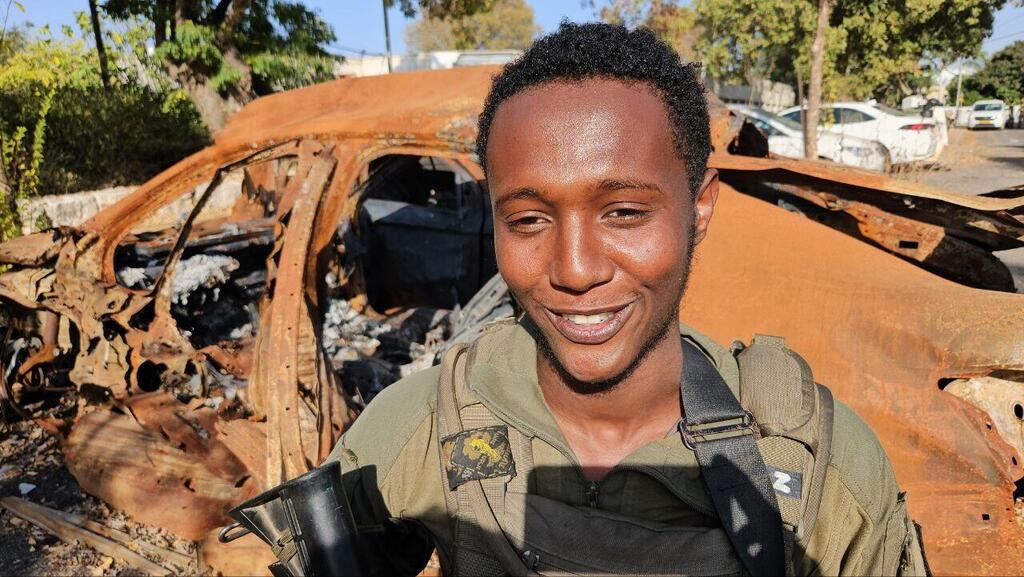Thick dust clouds rise along the road leading to Maroun al-Ras, a key hilltop village in southern Lebanon overlooking the Israeli communities of Avivim and Yir’on. Israeli D9 bulldozers and tanks, operating under the command of the Golani Brigade, now move freely in the area.
Just over a week ago, however, Golani soldiers approached the village by foot, navigating through boulders and rugged terrain in the dead of night, just before the first autumn rains would transform the dry landscape into a dense thicket.
The IDF has gained rapid operational control over the area, enabling freer movement within this hostile village, which played a symbolic role in the 2006 Lebanon War. Maroun al-Ras sits on a ridge extending toward the nearby town of Bint Jbeil, and Israeli commanders now travel back and forth across the border with relative ease—just over a mile away.
In the midday sun, IDF bulldozers shine as they clear new routes and demolish structures that Hezbollah forces once used as launching points for their elite Radwan Force. Nearby, Golani support troops assist their comrades on the front lines. Just days ago, the unit’s drone operators halted the advance of two Israeli Namer armored personnel carriers after detecting six massive, linked explosives planted by Hezbollah fighters.
The support company continues to fulfill its mission with advanced observation and attack capabilities. Their drones, precision mortar fire, snipers and logistical operations, including ammunition and equipment transport, play a critical role in assisting the troops stationed at the front.
These soldiers, who traversed significant distances on foot deep within Israeli territory, have been preparing for this operation in recent months, despite limited training time due to the ongoing "defensive battle" in the region.
Eight months of frustrating wait
For months, Israeli soldiers stationed along a security buffer zone within Israeli territory faced uncertainty and frustration. While their comrades from the Givati and Nahal brigades fought in Gaza, these troops remained long-term on outposts with no clear end date.
"Now, they’re like lions unleashed from a cage," said company commander Capt. Rotem Mizrahi. "We endured eight challenging months, filled with uncertainty, despite the defensive gains we made. One day we were told we might go back to Gaza, the next, we were preparing for Lebanon. Fighting in Gaza was seen as more 'glamorous,' but this time, everything went as planned."
These soldiers, now engaged in combat in southern Lebanon, have been targeting Hezbollah positions with the precision of a simulator, using the large stockpile of weapons they discovered.
Despite their youth, some barely 20 years old, signs of stress are shown in the white streaks in their hair as they take a break among the yellowing foliage of their makeshift home for the past six months. Many of these young fighters, who were still high school seniors on October 7 last year, now carry M4 rifles, having moved on from the Israeli-made Tavor rifles previously associated with Israel's infantry over the past two decades.
Others bear the marks of the past year more visibly, with wrinkles and a mature, hardened demeanor. "These soldiers have grown so much that I feel like I’m talking to 30- or 40-year-olds," Mizrahi noted. "They’ve gained a lifetime of experience, not just in combat but in life itself."
His deputy, Lt. Ziv Braymok, recounted preparing for a dawn assembly at 5:30 a.m. on the day the war broke out, while stationed in Nahal Oz. "It started with a heavy barrage of mortars,” he said. “We quickly gathered 20 soldiers and took out the snipers' rifles. Just 20 of us faced hordes of Hamas terrorists, and we managed to kill 70 of them."
"Equipment soaked in the blood of fallen comrades was repurposed for the battle. Since then, I’ve been going at full speed. I’ll finish my role and then get out."
That morning, Lt. Braymok saw some of his soldiers fall, some dying in his arms. Before leading his troops to reclaim the Nahal Oz outpost, he received a call from his commanding officer, Lt. Col. Tomer Greenberg, who later fell in battle.
"He told me, 'No, go to Kibbutz Kfar Aza. There are many enemies there,'" Braymok recalled. The difficult decision, made at 7:30 a.m. that day — choosing where to fight and whom to save — still resonates deeply with these soldiers. "Civilians first," they say, as the weight of that morning lingers in their hearts.
"The soldiers remember more than we do as commanders. In hindsight, we see things from a different perspective,” Lt. Braymok said. "I don’t remember faces. While searching from house to house in Kibbutz Kfar Aza, I saw dead bodies on one of the beds. A mother and daughter shot in their beds, but I can’t recall their faces or details like their clothes or hair color—it’s gone. My focus was purely on the mission: kill terrorists, save as many civilians as possible and evacuate the wounded."
Golani Brigade combat teams conducting targeted ground operations in southern Lebanon
(IDF)
Braymok described how they reached the height of the fighting and set up defenses near Kibbutz Saad’s carrot packing house to prevent further incursions by terrorists. Equipment soaked in the blood of fallen comrades was repurposed for the battle. "Since then, I’ve been going at full speed. I’ll finish my role and then get out," he added.
The psychological toll on his unit has been steep—many soldiers struggled to continue and left the unit due to mental health issues, leading to the disbandment of an entire platoon. Yet, recruits brought fresh energy to Golani. Braymok’s unit went on to lead successful assaults in the narrow allies of Gaza’s Shijaiyah neighborhood, the Zeitoun hills and the high-rise towers of the upscale al-Rimal neighborhood.
Reflecting on the aftermath of October 7, Braymok recalled an incident when he and his medic shouted at an unarmed civilian trying to join their fight in Kfar Aza. Hours later, they realized the man was Brig. Gen. (res.) Yisrael Shomer, commander of the 146th Division.
"We didn’t understand why he was calling for reinforcements on the Lebanese border until his wife asked him to evacuate the wounded to their home and put on his uniform. He returned to us in IDF uniform, with the rank of brigadier general," Braymok said.
After their deployment in Gaza ended, Braymok’s unit was sent straight to the northern front, defending the volatile Lebanese border. Now, as part of a long-delayed ground offensive, his soldiers are capturing key Hezbollah villages that they had observed for eight months, intended to be used as launch pads for the terrorist group’s elite Radwan Forces to carry out its plan to invade and conquer the Galilee.
The non-stop airstrikes have weakened Hezbollah significantly, forcing thousands of Radwan terrorists north of the Litani River. Many of their tactical commanders have been killed in Operation Northern Arrows. But most importantly, the newest war objective now flows in their veins: Returning northern residents home safely.
But for Braymok, the mission is personal. "Every day, we wake up surrounded by abandoned toys in the kindergarten where we’ve been sleeping for months. The pictures of the kids stare back at us. This is their kindergarten, but they haven’t been here for a year," he said.
"We’ve come to know the residents from a distance, and their emergency responders have become like second fathers to us. I’ve gotten to know entire families from the kibbutzim. We’ve grown used to seeing the empty kibbutz, but we’re determined to push the threat back and bring them home ourselves."
Close air support is key
Drawing on experience gained in Gaza, Israeli support troops in Lebanon demonstrated sharp thinking and quick reactions when they spotted a glint from the window of a three-story building. Despite being hit by a missile the day before, suspicions arose that Hezbollah fighters were inside. Company commander Capt. Mizrahi warned his soldiers, positioned about 300 yards away, of a possible anti-tank squad in the orange-roofed building, which had not yet been cleared.
Lt. Ron, a young platoon commander, directed an Apache helicopter to fire a Hellfire missile at the building, maintaining direct communication with the pilot. A drone, continuously surveying the area, streamed the strike live on screen. The soldiers, anticipating Hezbollah fighters may flee or reappear from nearby buildings disguised as firefighters or medics, remained alert. "They often move like that," explained Capt. Mizrahi.
When the missile struck, the explosion echoed through the makeshift command post. Forces on the ground, aided by a drone and a sniffer dog, prepared to sweep the building. The scale of the operation is large, with an entire brigade assigned to each village, though Capt. Mizrahi noted, "It's a powerful force, but not on the battalion scale seen in Maroun al-Ras during the Second Lebanon War. I studied that battle closely and passed it on to my soldiers, most of whom were just born at the time."
Time, however, is limited. Unlike in Gaza, the troops are working against the clock, with more villages to secure. Though the operation is smaller in scope, some believe Hezbollah has deliberately abandoned these villages, anticipating Israel’s focus on them in this ground campaign.
Outside the command post, Corporal Yayo Tesfa, smiling despite the circumstances, stood out. His three younger brothers remain stranded in Gondar, Ethiopia, waiting for permission to immigrate to Israel. A fourth brother, Yehuda, was born just a week ago in Haifa, but Tesfa has yet to meet him. "I’m a spotter and a sharpshooter, that’s my job," said Tesfa, his optimism shining through. "Honestly, Lebanon is tougher than Gaza, but we’re doing great. We’re Golani."
Get the Ynetnews app on your smartphone:



